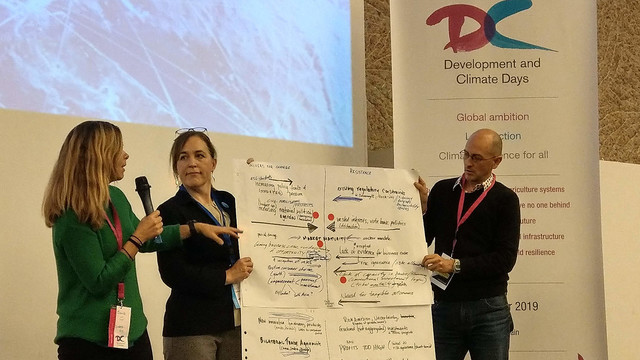Least Developed Countries launch 2050 Vision for a climate-resilient future
The world’s least developed countries have launched a long-term strategy for climate resilience and net zero emissions by 2050.

The LDC 2050 Vision is for all the least developed countries to deliver climate-resilient development pathways by 2030 and net zero emissions by 2050, to ensure their societies, economies and ecosystems thrive (Image: Nick Turner/IIED/LDC Group)
More than two thirds of the people killed in climate-related disasters during the past 50 years were living in the world's poorest nations, according to findings released by the group of Least Developed Countries (LDCs) ahead of the UN Climate Action Summit in New York.
The LDC Group at the UN climate negotiations represents more than one billion people. They say their nations are most affected by the impacts of climate change, although they have contributed least to the problem.
Despite their vulnerability, the LDCs aim to take the lead in developing a more effective, ambitious climate response. They have launched an ambitious vision for achieving a climate-resilient future by 2050.
The LDC 2050 Vision is for all the least developed countries to deliver climate-resilient development pathways by 2030 and net zero emissions by 2050, to ensure their societies, economies and ecosystems thrive.
The 2050 vision sets out the measures the LDCs will take to push for climate resilience and net zero emissions by 2050. These include channelling 70% of climate funding to drive local-level action, holistic climate change planning from the local to the national level, and ensuring climate solutions are centred on gender and social justice.
The LDCs have released a video featuring the lead negotiator for the LDC Group at the UN climate negotiations, Tenzin Wangmo, in which she sets out the key points of the 2050 vision. You can watch the video below, or on IIED's YouTube channel.
The chair of the LDC Group, Sonam P. Wangdi, said: “The least developed countries are being bold and ambitious.
“We have committed to doing more than our fair share in the global effort to halt the climate crisis and address its impacts. But we cannot do it alone. At the summit, we are asking the international community to commit to supporting our priorities, our initiatives and our vision.”
The LDCs are asking for US$450m of investment over 10 years in the LDC Initiative for Effective Adaptation and Resilience (LIFE-AR), to help them deliver the adaptation and resilience work outlined in their vision.
This money will support the five countries who are the first to join the drive – Uganda, the Gambia, Bhutan, Malawi and Tanzania.
The 2050 vision was informed by LIFE-AR, an LDC-led, LDC-owned initiative that is gathering evidence about effective long-term climate adaptation from around the globe.
The LDCs are also championing two other long-term initiatives:
- The LDC Renewable Energy and Energy Efficiency Initiative (LDC REEEI), a programme to achieve universal energy access and accelerate the transition to renewable energy and energy efficiency in all LDCs, and
- The LDC Universities Consortium on Climate Change (LUCCC), a collaborative network of 10 universities that will enhance research capacity and expertise in climate change.
IIED has been working with the LDC Group to support the review of evidence that underpins the LDC 2050 Vision. Download some key resources:
- 'LDC 2050 Vision: towards a climate-resilient future (PDF)
- 'Delivering our climate-resilient future: lessons from a global evidence review' (PDF)
About the Climate Action Summit
The 2019 Climate Action Summit was convened by the UN Secretary-General (UNSG) António Guterres to mobilise political and economic energy at the highest levels to advance action on climate change.
On the eve of the summit, IIED director Andrew Norton released a statement calling for the summit to show real action, not back away from the climate crisis urgency: "Many new initiatives will be announced today. But for the summit to be considered effective, they need to address what the poorest countries are asking for rather than be determined by international partners and donors."




